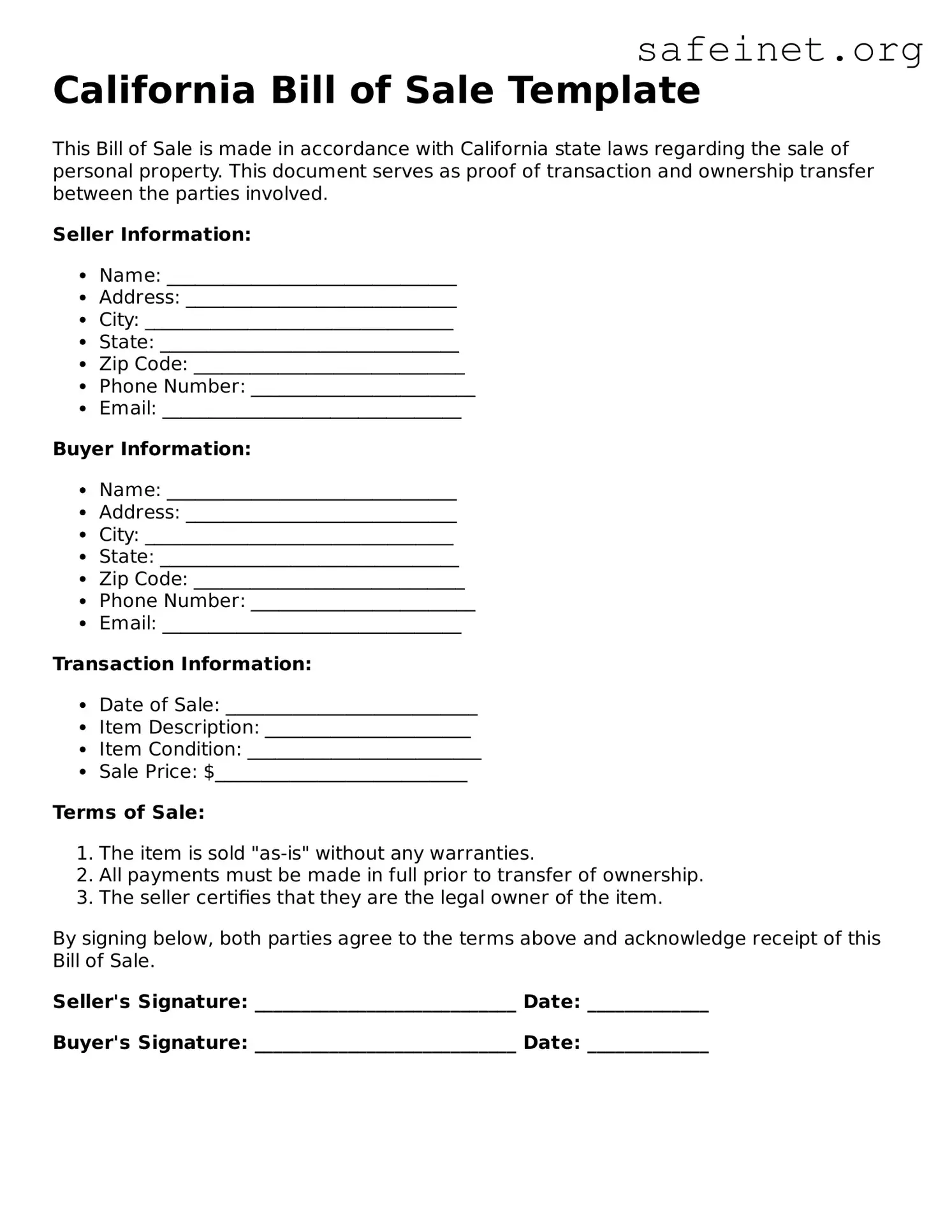The Vehicle Bill of Sale is a document similar to the California Bill of Sale. This form serves as proof of the transfer of ownership of a motor vehicle. It typically includes essential details such as the vehicle identification number (VIN), make, model, and year, as well as the seller’s and buyer’s information. Like the California Bill of Sale, it provides legal protection for both parties in the transaction.
The Personal Property Bill of Sale is another related document. This form covers the sale of tangible personal property, which may include items like furniture, equipment, or machinery. It specifies the item being sold, the purchase price, and the parties involved. In a way similar to the California Bill of Sale, it serves to establish ownership transfer and protects the buyer's interests.
In the case of the Boat Bill of Sale, this document specifically addresses the sale of a watercraft. It includes details such as the boat's make, model, hull identification number (HIN), and registration information. Like the California Bill of Sale, it acts as a formal agreement and provides evidence that the boat has changed ownership.
The Firearm Bill of Sale is relevant for transactions involving firearms. This document operates similarly to the California Bill of Sale by detailing the firearm being sold, including its make, model, and serial number, as well as the buyer’s and seller’s information. It helps both parties document the sale and ensures compliance with applicable laws regarding firearm ownership transfer.
The Motorcycle Bill of Sale facilitates the sale of motorcycles. This document outlines specifics such as the motorcycle's make, model, year, and VIN, along with both parties' details. Similar to the California Bill of Sale, it provides proof of ownership transfer and can be used in future inquiries regarding registration and ownership history.
The Equipment Bill of Sale is used when selling heavy machinery or tools. It captures the specifics of the equipment, including its make, model, and serial number, along with transaction details. This document, like the California Bill of Sale, ensures a clear record of the sale and protects the interests of both the buyer and seller.
The Antique Bill of Sale deals with the sale of antiques or collectibles. It documents details about the item, including its age, condition, and its historical significance, along with the seller’s and buyer’s identities. As with the California Bill of Sale, this document confirms the transaction and the shift in ownership.
The Mobile Home Bill of Sale applies to the transfer of ownership for mobile or manufactured homes. This form includes detailed information about the home, such as its serial number and title information. Like the California Bill of Sale, it is essential for clarifying the transfer of ownership and ensuring all legal obligations are met.
The Lease Agreement serves a different purpose but has some similarities in documenting the transfer of rights. It outlines the terms under which one party may use another's property, typically for a specified time. Though focused on lease terms rather than outright sale, it also establishes rights and responsibilities, paralleling the protective intent found in the California Bill of Sale.
